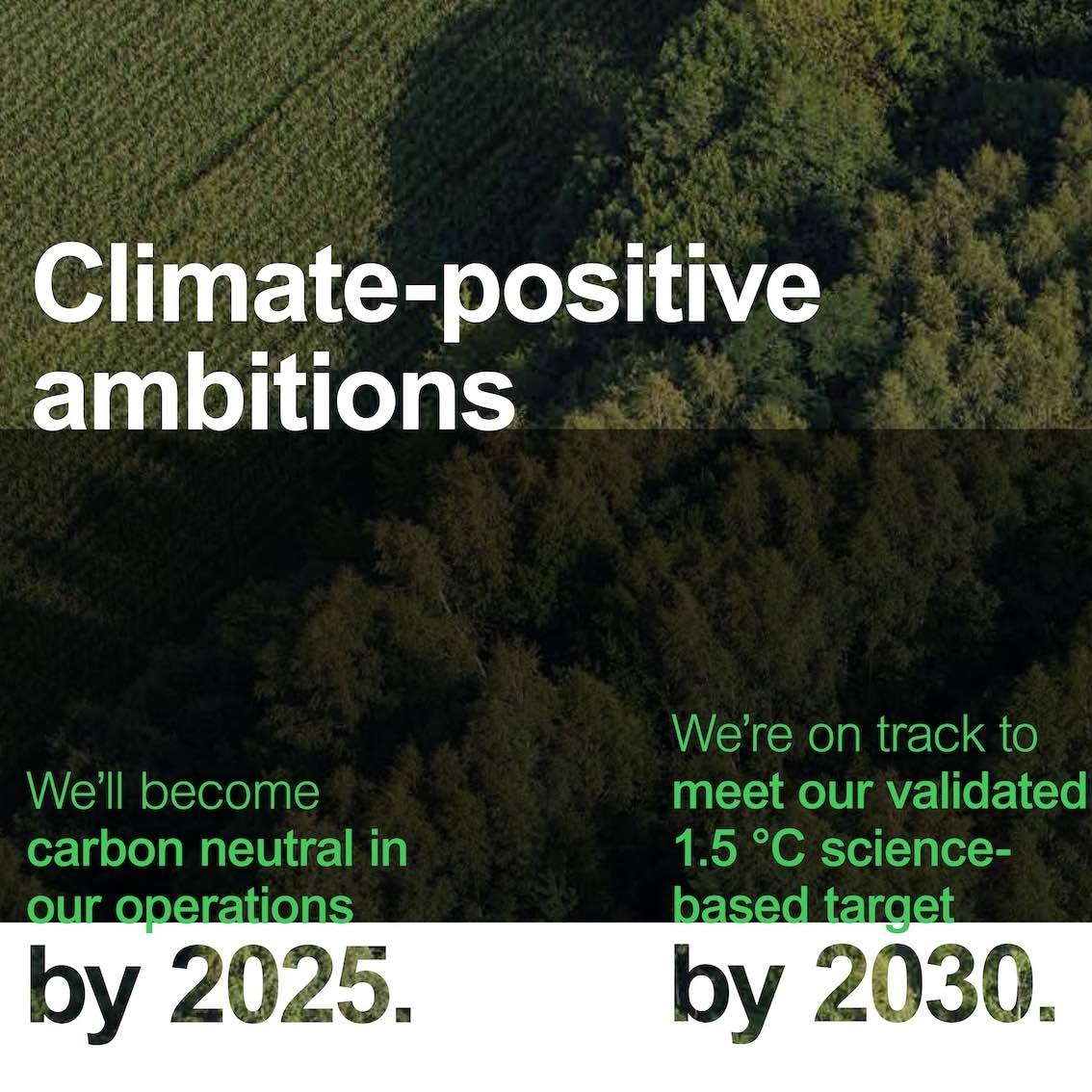By David Dodge, Green Energy Futures
Schneider Electric was named the most sustainable company in the world for 2021 by Corporate Knights a Canadian international sustainability rating firm.
Schneider Electric is a $27.2 billion Euro (2019), 185 -year-old French Company that began operating iron and steel mills spent decades manufacturing arms (tanks, ships, trains, and artillery) and today focuses on electricity products and services.
Today they have 135,000 employees worldwide and 2,000 in Canada.
In fact, you could say thanks to a few key business decisions they are in the energy conservation, climate change, and energy transition business at just the right time in history.
The company pivoted to electricity in the 1980s and today focuses on data centers, decentralized electrical distribution, smart grid solutions, energy efficiency, and renewable energy.
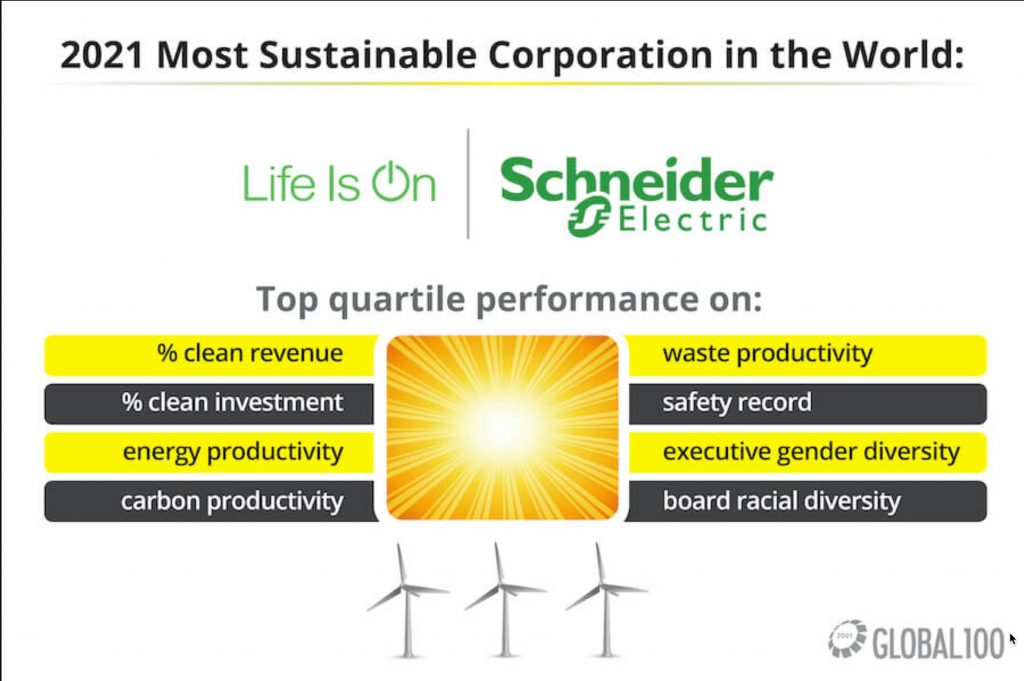
Green Revenues + Green Investment
They were named as the world’s most sustainable company because 70 per cent of their revenues are green, 73 per cent of its investments are in sustainable solutions, and “It also performed strongly in areas including racial and gender diversity and resource productivity and safety,” says Corporate Knights (CK).
“There’s a dilemma,” says Schneider Electric Canadian Country President Adrian Thomas. The world is going digital and needs a great deal more electricity and “We’re trying to prevent climate change, which means we have to be more efficient.”
And from soup to nuts in the electricity world, this is where Schneider Electric shines. From basic electronic equipment to sophisticated smart technologies for managing energy, to cutting-edge efficiency technologies, software, and services the company does it all.
Schneider even helps companies procure renewable energy, manage renewable energy, and for companies that can’t afford profitable investments in energy efficiency they sell energy as a service and provide financing.
Schneider Electric is also in the sustainability business and has had its own sustainability program for 15 years. These are some of the reasons Schneider Electric made the CK top Global 100 list of sustainable companies seven times in seven years and this year they landed up with the lofty title of number one in the world.
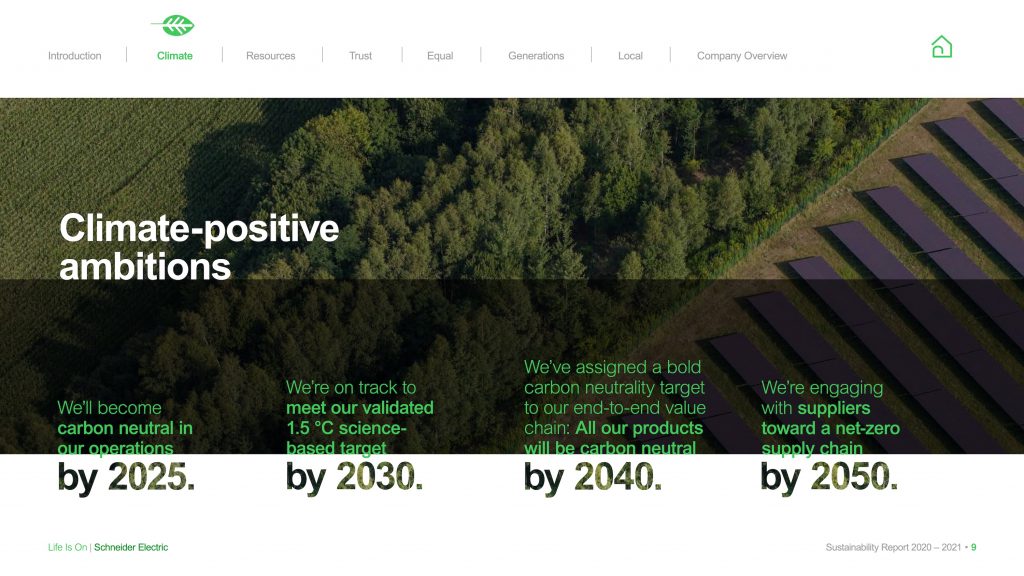
Sustainability & Climate Change
These days the sustainability elephant in the room is climate change and Schneider has tackled this head-on by setting a goal of becoming carbon neutral by 2025 with offsets and without offsets by 2030. By the end of 2020, the company had procured enough renewable energy to power 80 per cent of its operations.
Even more difficult, Schneider Electric wants to reach carbon neutrality by 2040 with all the products in their value chain. They would like suppliers to do the same by 2050.
The happy coincidence is when Schneider is successful in business, they are successful at reducing emissions. In 2020 they smashed their own goal of helping customers reduce emissions by 120 million tonnes by reaching 134 million tonnes.
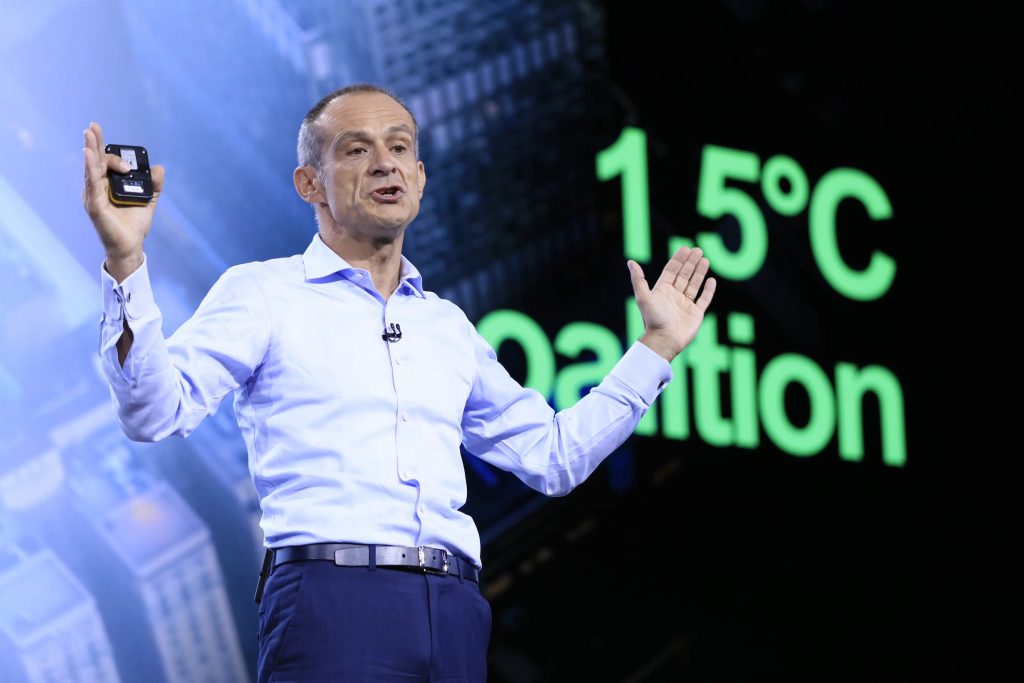
In January 2021 the international CEO of Schneider Electric, Jean-Pascal Tricoire shared a stage with Prime Minister Justin Trudeau of Canada in France at the United Nations/World Bank One Planet Summit to discuss and mobilize the protection of biodiversity.
In 2020 Schneider Electric became the first company to publish its end-to-end biodiversity footprint using the new Global Biodiversity Score tool from CDC Biodiversité.
“What we learned is that about two-thirds of our biodiversity impact is coming from greenhouse gas emissions,” says Thomas. “So that told us that we really need to double down on some of our commitments for carbon and greenhouse gas reductions.”
It also reaffirmed the importance of reducing emissions down the supply chain.
“The crisis we are currently experiencing further highlights the urgency of combating the dynamics of biodiversity collapse by tackling its main drivers in order to move towards a more sustainable model of society,” says Marc Abadie, Chairman of CDC Biodiversité.
Schneider is also working to eliminate the use of single-use plastics and to increase the use of recycled materials and invest in the circular economy. They also want to deploy biodiversity conservation programs at 100 per cent of their sites.
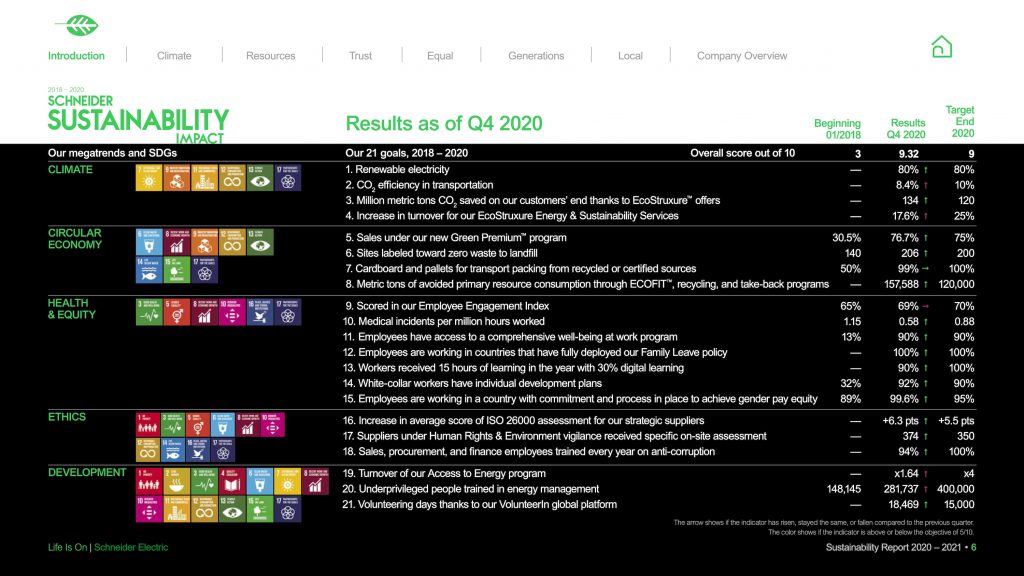
And Schneider Electric also wants to reduce carbon dioxide emissions by 50 per cent in the operations of 1,000 suppliers in the short term on the road to carbon neutrality.
But how do you get suppliers to reduce emissions?
The company has created the Schneider Electric Exchange to connect people with experts, share technical information and data sets, and of course products that can help.
“We share that with our suppliers so that they can, they can learn and adapt,” says Thomas adding that for other suppliers: “It does become one of the evaluation criteria.”
In the long run, these so-called scope three emissions, which are often called value chain emissions are the most challenging to reduce.
“On average, they’re more than 11 times the emissions of your direct operations,” says Thomas. On the upside, there will be significant pressure for these companies to reduce these supply chain emissions. “Everyone will be looking to improve their sustainability and their emissions so that they can be part of that low emissions supply chain,” says Thomas.
Considering emissions down the value and supply chains is critical to reducing emissions in the world and besides “It’s a more holistic view of the world,” says Thomas.
And leadership is very important. “If we can get carbon neutral by 2025, then I think this shows the world that large global corporations can become carbon neutral. If other companies become carbon neutral, at some point the value chain does become carbon neutral.”
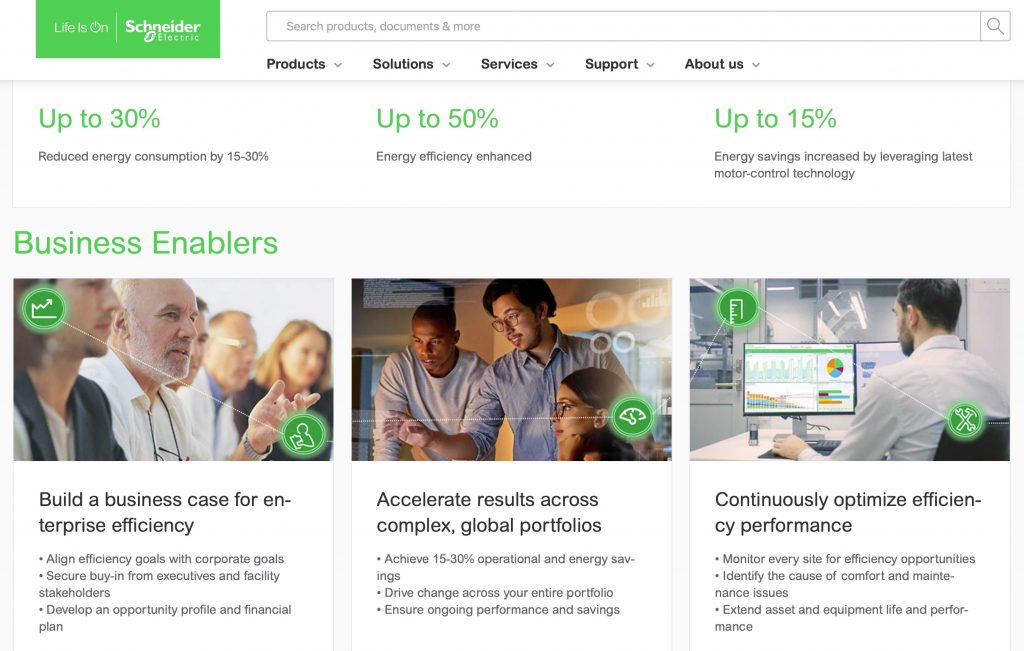
Efficiency reduces emissions, makes money
Often people forget most actions to reduce emissions also save money. “I think there has been a myth that sustainability is more expensive,” says Thomas. Becoming more efficient means a company is lowering costs, becoming more competitive, and getting a return on investment.
“In most cases, if you can reduce your consumption, you’re also going to reduce your costs and there’ll be a return on investment for them,” says Thomas.
It’s good times for a company in the business of efficiency, clean energy, and smart technologies. Thomas says it is also a time of opportunity whether you are a company or an individual looking for a career.
Schneider recently did some work with NAIT (polytechnic in Edmonton, Alberta) to help students understand the dynamics of microgrids. “I think that’s also important if we’re going to succeed in this journey that people have the skillsets moving forward. NAIT has one of the most respected Alternative Energy Programs in Canada.
“The rate of change is fast. So, I think it’s going to open up a lot of opportunities for different people, but if you’re in the industry, you’re going to have to be agile and you’re going to have to adapt and move,” says Thomas.
Learn more about Schneider’s sustainability progress and its commitment to biodiversity.
